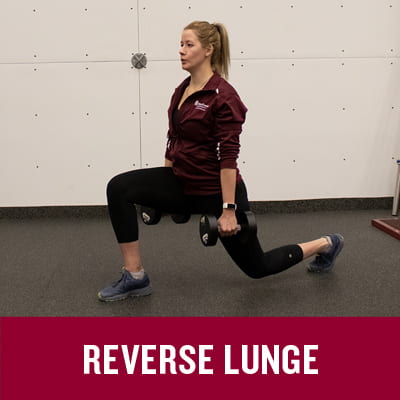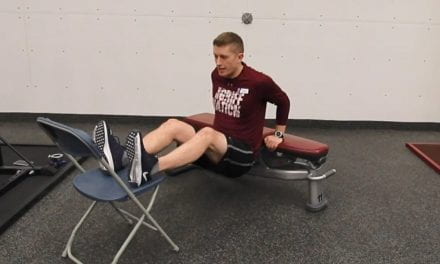Incorporating exercises that work one limb side at a time is considered as a unilateral exercise, whereas using both limbs is bilateral. The main benefit of  unilateral exercises is the ability to work on and decrease any deficiencies from one side to the other. Adding in unilateral exercises into your program is a great way to not only balance out your left and right, but to work on your stability and coordination. The first exercise in this four-part progression is the Reverse Lunge. One of the great aspects about the reverse lunge is that it can be adapted to any ability level, whether you require that extra support for your balance or want to load and strengthen your legs, it is a versatile exercise that any age and ability group can perform.
unilateral exercises is the ability to work on and decrease any deficiencies from one side to the other. Adding in unilateral exercises into your program is a great way to not only balance out your left and right, but to work on your stability and coordination. The first exercise in this four-part progression is the Reverse Lunge. One of the great aspects about the reverse lunge is that it can be adapted to any ability level, whether you require that extra support for your balance or want to load and strengthen your legs, it is a versatile exercise that any age and ability group can perform.
Objective
- Develop single leg coordination and stability
Equipment Needed:
- Any variation of weight implements: barbell, dumbbell, Vipr, Medicine ball
- TRX or a bench can be used for assistance.
Muscle Groups Targeted
- Hip Extensors, Hip Flexors, Knee Extensors, Ankle Stabilizers, Trunk Stabilizers
Starting Position
- Standing upright with feet hip width apart
- Weight loading variations included, but not limited to: holding dumbbells at the sides, dumbbell in goblet position, barbell in front or back position
- Shoulders back and down with core braced
Movement
- Stepping backwards keeping the weight on your front stationary leg
- Feet should remain hip width apart throughout the lunge position with your knee remaining vertical to your ankle and in line with your hip
- Drop down until your hip is at the same height as your knee, back knee should have a moderate bend.
- Maintaining an upright position with your shoulders over top of your hips, return to starting position
Recommended sets and repetitions
- 4 sets of 5-12 reps per leg depending on focus
Regression/Progression Tips
- Break the movements down if you find your balance is a limiting factor
- To make it harder, add a single leg balance at the top of the movement and decrease the weight distribution to your rear foot
Visit our website for our personal trainer bios and information on fitness program designs and individual and group personal training, plus Registered Fitness Courses like Women & Weights.
by Rachel Korpany
Rachel is a graduate from the University of Edinburgh with her Masters of Science in Strength and conditioning, she obtained her Bachelors of Physical Education graduate from the University of Alberta. She is a Certified Strength and Conditioning Specialist through the NSCA with a strong background in Olympic Weightlifting.


